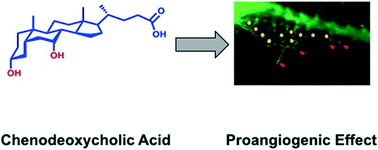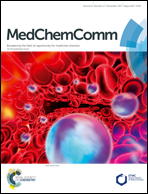Deciphering the role of hydrophobic and hydrophilic bile acids in angiogenesis using in vitro and in vivo model systems
Abstract
Bile acids have emerged as strong signaling molecules capable of influencing various biological processes like inflammation, apoptosis, cancer progression and atherosclerosis depending on their chemistry. In the present study, we investigated the effect of major hydrophobic bile acids lithocholic acid (LCA) and deoxycholic acid (DCA) and hydrophilic bile acids cholic acid (CA) and chenodeoxycholic acid (CDCA) on angiogenesis. We employed human umbilical vein endothelial cells (HUVECs) and zebrafish embryos as model systems for studying the role of bile acids in angiogenesis. Our studies revealed that the hydrophilic CDCA enhanced ectopic vessel formation as observed by the increase in the number of sub-intestinal vessels (SIVs) in the zebrafish embryos. The pro-angiogenic role of CDCA was further corroborated by in vitro vessel formation studies performed with human umbilical vein endothelial cells (HUVECs), whereas the hydrophobic LCA reduced tubulogenesis and was toxic to the zebrafish embryos. We validated that CDCA enhances angiogenesis by increasing the expression of vascular growth factor receptors (VEGFR1 and VEGFR2) and matrix metalloproteinases (MMP9) and by decreasing the expression of adhesion protein vascular endothelial cadherin (VE-cadherin). Our work implicates that the nature of bile acids plays a critical role in dictating their biological functions and in regulating angiogenesis.



 Please wait while we load your content...
Please wait while we load your content...